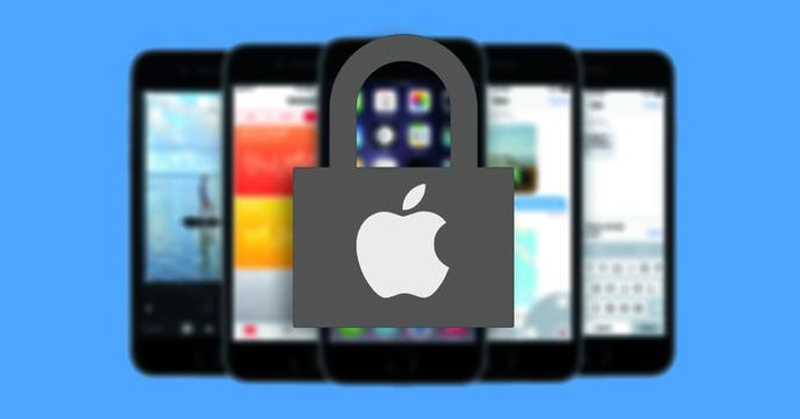In today’s digital age, data security is of utmost importance. With the increasing use of mobile devices, it is essential to protect sensitive information stored on smartphones. Apple’s iOS operating system has gained a reputation for its robust security features, including data encryption. In this article, pacificconnectionsusa.net will explore the various data encryption methods employed by iOS to provide stronger security for users’ personal information.
In this digital era, where sensitive data is constantly being transmitted and stored on mobile devices, it is crucial to have robust security measures in place. iOS, the operating system developed by Apple, has implemented several data encryption methods to safeguard user information. Let’s delve into these encryption techniques and understand how they contribute to stronger security.
Understanding Data Encryption
Data encryption is a process that transforms information into a coded form to prevent unauthorized access. It ensures that even if someone gains access to the encrypted data, they cannot decipher it without the appropriate decryption key. Encryption acts as a protective shield, making it incredibly challenging for hackers or malicious actors to breach the security and retrieve sensitive information.
iOS Data Protection
Apple prioritizes user privacy and data security. iOS employs a comprehensive data protection framework to safeguard user information. The data protection feature ensures that sensitive data remains encrypted, both while the device is locked and in the background. It relies on the user’s passcode as the encryption key, ensuring that only authorized individuals can access the data.
Secure Enclave
The Secure Enclave is a hardware-based security component present in iOS devices equipped with Touch ID or Face ID. It stores cryptographic keys and performs critical security operations, such as secure data storage, secure boot, and biometric authentication. The Secure Enclave provides an additional layer of protection for sensitive user data.
File-Level Encryption
iOS incorporates file-level encryption to protect data stored on the device’s internal storage. Each file is encrypted using a unique file key, which is then protected by the device’s passcode or biometric authentication. This ensures that even if an attacker gains physical access to the device’s storage, they would be unable to access the encrypted files without the necessary credentials.
iCloud Keychain
iCloud Keychain is a secure password manager provided by Apple. It utilizes strong encryption algorithms to protect passwords, credit card details, and other sensitive information. The data stored in iCloud Keychain is synced across the user’s Apple devices, ensuring accessibility and security across multiple platforms.
Secure Socket Layer (SSL) and Transport Layer Security (TLS)
iOS implements SSL and TLS protocols to secure data transmission over networks. SSL and TLS establish an encrypted connection between the user’s device and the server, preventing unauthorized parties from intercepting and tampering with the data. This encryption ensures that sensitive information, such as login credentials and financial details, remains protected during online transactions and communication.
Biometric Authentication
iOS devices incorporate advanced biometric authentication methods, such as Touch ID and Face ID, to provide enhanced security. These features use unique biometric characteristics, such as fingerprints or facial features, to authenticate the user. By leveraging biometrics, iOS devices add an additional layer of protection, making it significantly more challenging for unauthorized individuals to access sensitive data.
Two-Factor Authentication (2FA)
Two-Factor Authentication (2FA) is a security mechanism that adds an extra layer of protection to user accounts. iOS devices support 2FA, requiring users to provide an additional authentication factor, such as a verification code sent to their trusted device, along with their password. This method prevents unauthorized access even if someone manages to obtain the user’s password.
Conclusion
Data security is a paramount concern in today’s digital landscape, and iOS has implemented robust encryption methods to ensure the protection of user information. By employing techniques such as iOS data protection, Secure Enclave, file-level encryption, iCloud Keychain, SSL/TLS, biometric authentication, and 2FA, Apple has created a secure environment for its users. These measures enhance the overall security posture, making it more challenging for malicious actors to compromise sensitive data on iOS devices.
FAQs
Q1. Can iOS encryption be bypassed?
A1. iOS encryption is designed to be highly secure, and bypassing it without the proper credentials or exploits is extremely challenging.
Q2. Is iCloud Keychain secure?
A2. Yes, iCloud Keychain utilizes robust encryption algorithms to secure sensitive information, making it a secure password management solution.
Q3. Can biometric authentication be fooled?
A3. While it is challenging to fool biometric authentication, advanced techniques and sophisticated replicas can potentially bypass it. However, such instances are rare and require significant effort.
Q4. Is two-factor authentication necessary on iOS devices?
A4. Two-factor authentication adds an extra layer of security and is highly recommended to protect user accounts from unauthorized access.
Q5. Are SSL and TLS encryption methods secure?
A5. SSL and TLS encryption provide secure communication channels, protecting data from interception and tampering during transmission.














